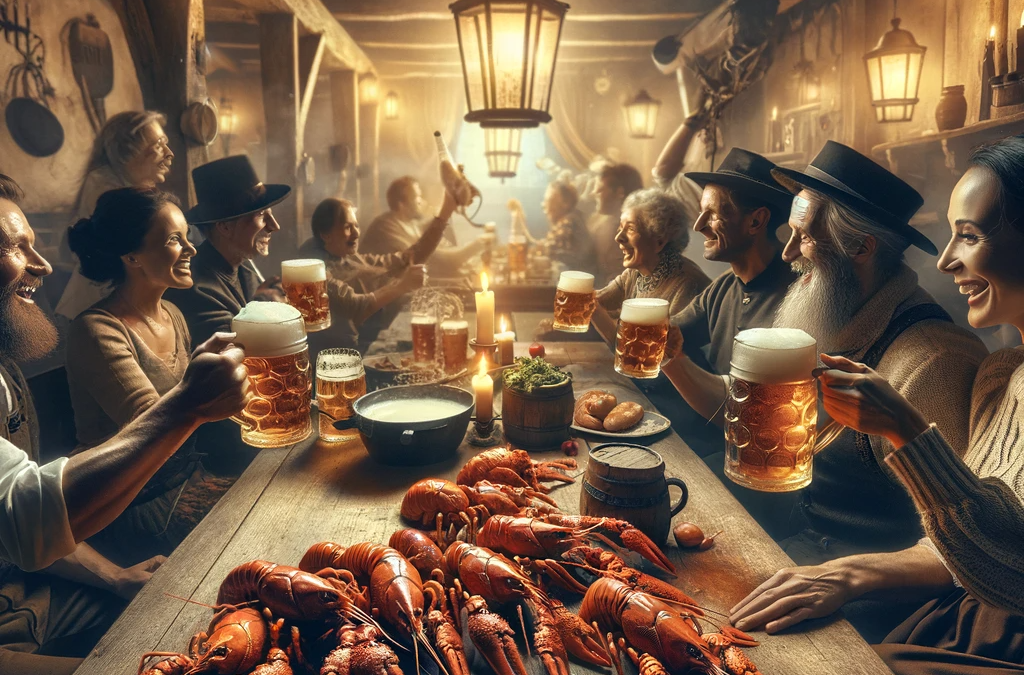Eating crayfish is not just a process of consuming food, it’s a whole culture with ancient traditions and customs. Crayfish eating has become a social event in various countries, each offering a unique approach to this delicacy.
North America
In Louisiana, USA, crayfish parties known as “boils” are popular. These are social events involving dozens, sometimes even hundreds of people. Crayfish are boiled in large pots with corn, potatoes, and spicy sausages, after which it all is poured out directly onto a newspaper-covered table where people gather around and enjoy the food.
Europe
In France, crayfish are also very popular. They are boiled in a broth with aromatic herbs, including dill, and served as an aperitif. The French also enjoy discussing various aspects of crayfish, including their wine compatibility and the best ways to eat them.
In Sweden, special “crayfish parties” (kräftskiva) are held in August. Crayfish are boiled in broth with lots of dill, and then an outdoor party is arranged with special decorations in the form of moon and star lanterns.
Asia
In China and other Asian countries, crayfish are often stir-fried in a wok with spices and sauces. This cooking method gives the crayfish a special taste and aroma.
Little-Known Facts
There are also many other traditions and customs associated with crayfish. For example, in some countries, there is a custom not to eat crayfish in months without the letter “r” in the name (i.e., summer months), although this rule is no longer strictly observed today.
There is also a tradition of leaving the last crayfish on the plate as a sign of respect to the “spirit of the crayfish”.
Conclusion
Regardless of your style of eating crayfish – be it an American crayfish boil or a Swedish “kräftskiva”, French aperitif tradition, or Asian love for fried crayfish – it is important to enjoy the process and appreciate the diversity of cultures that make this ritual so unique. After all, crayfish are not just a delicious delicacy, but also a great reason for socializing, celebration, and new gastronomic discoveries.

